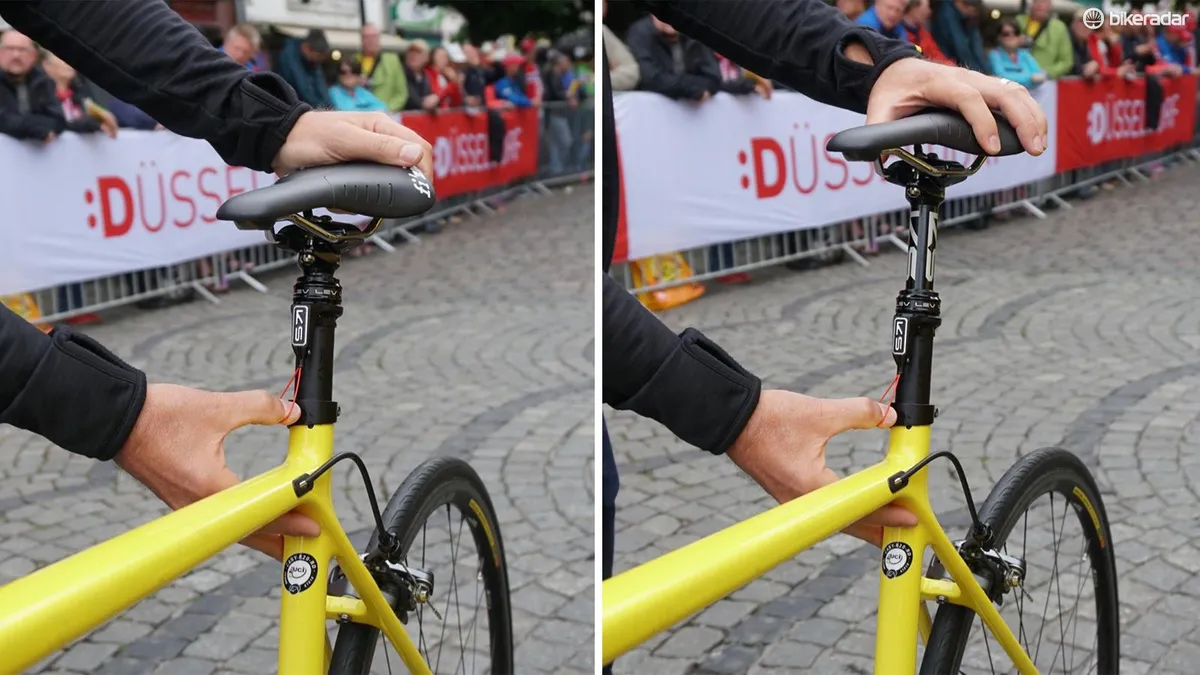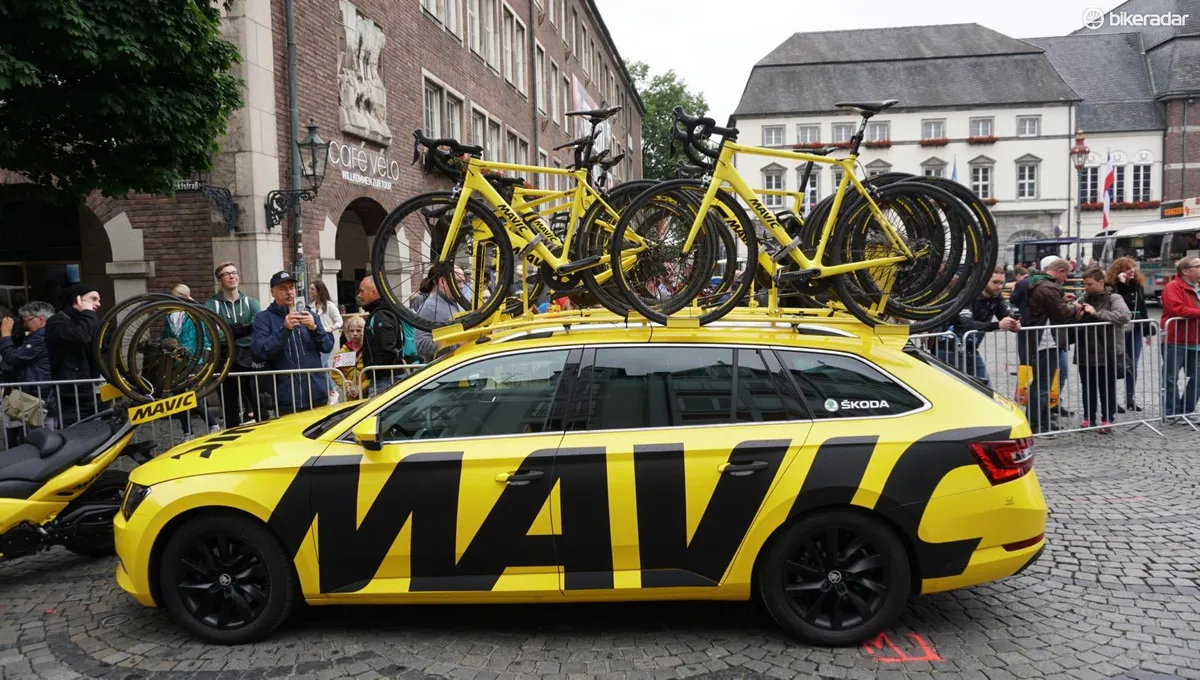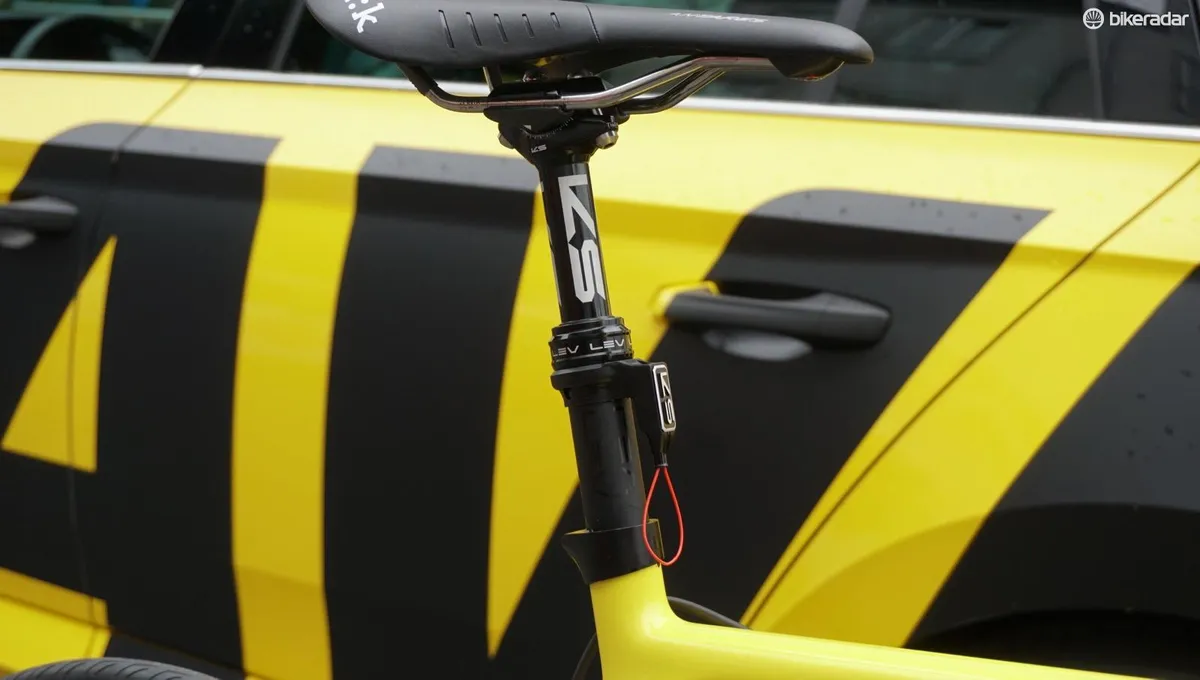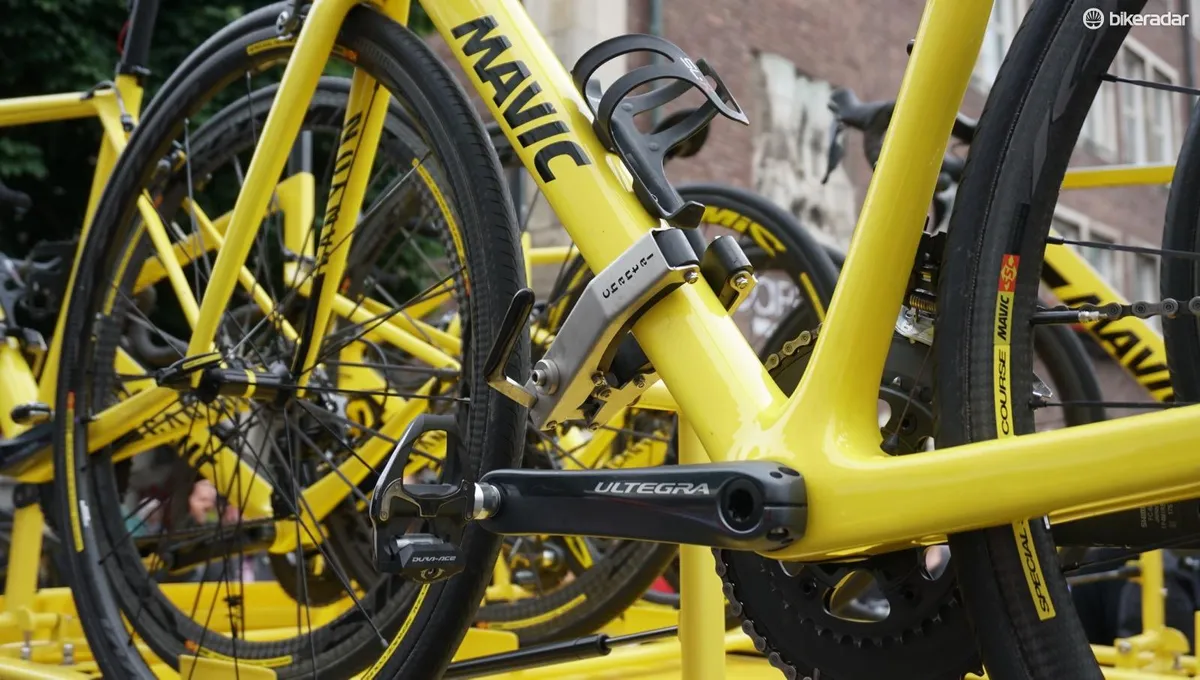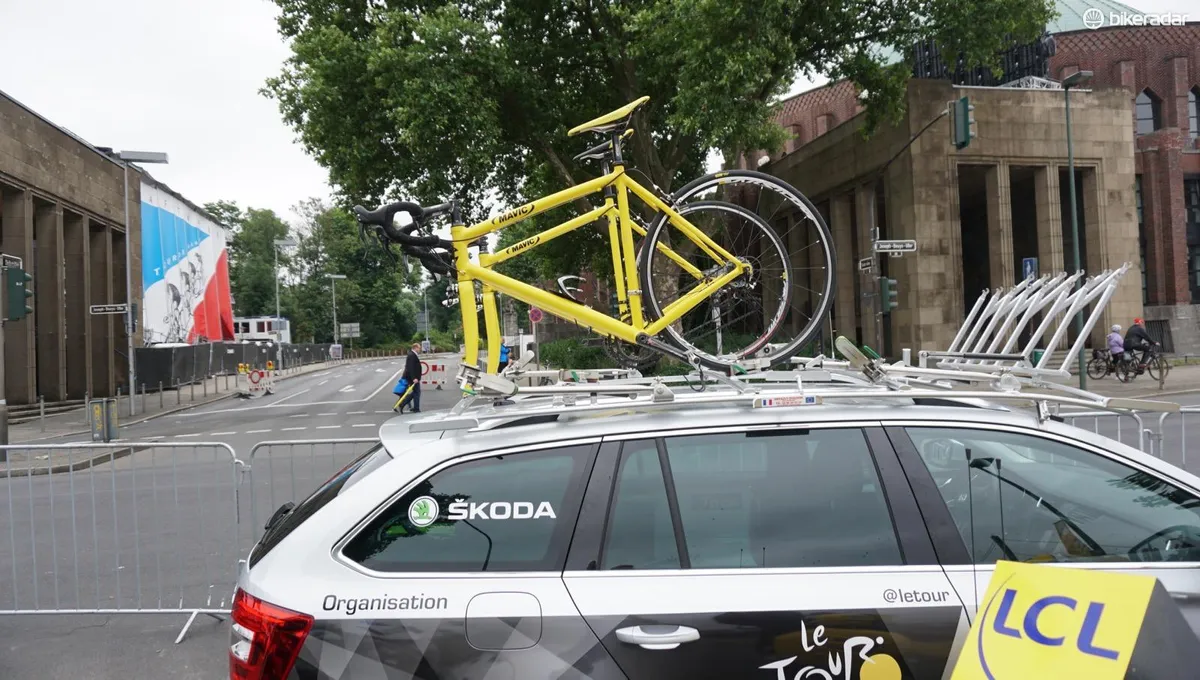Dropper posts are now common for mountain biking, where a quick lowering of the saddle can add agility on descents and jumps. But dropper seatposts in the Tour de France? This year, for the first time, Mavic has installed custom KS dropper posts on multiple neutral support bikes so riders can adjust their saddle height on the fly should they need to take a bike after a crash or a puncture.
Mavic also overhauled the configuration of its four support cars in the race, favoring access to complete bikes over single wheels.
- Unreleased Giro Vanquish, new Lazer Bullet highlight Tour de France helmets
- Historic first: A double-disc Tour de France time trial bike
- Tour de France bikes, gear and tech
From Froome's low saddle to a moveable saddle
Mavic has long been associated with professional racing, its signature yellow ever present in the Tour de France and other elite events. But during last year's Tour, the brand ended up associated with race leader Chris Froome running up Mont Ventoux on stage 12.
Froome was involved in a crash and took a far-too-small Mavic bike with the wrong pedals. After pedaling awkwardly like an adult on a child's bike, unable to stand up because of pedal incompatibility, Froome abandoned the yellow bike and ran uphill, a remarkable sight in the Tour.
Mavic was keen to avoid anything remotely similar this year.
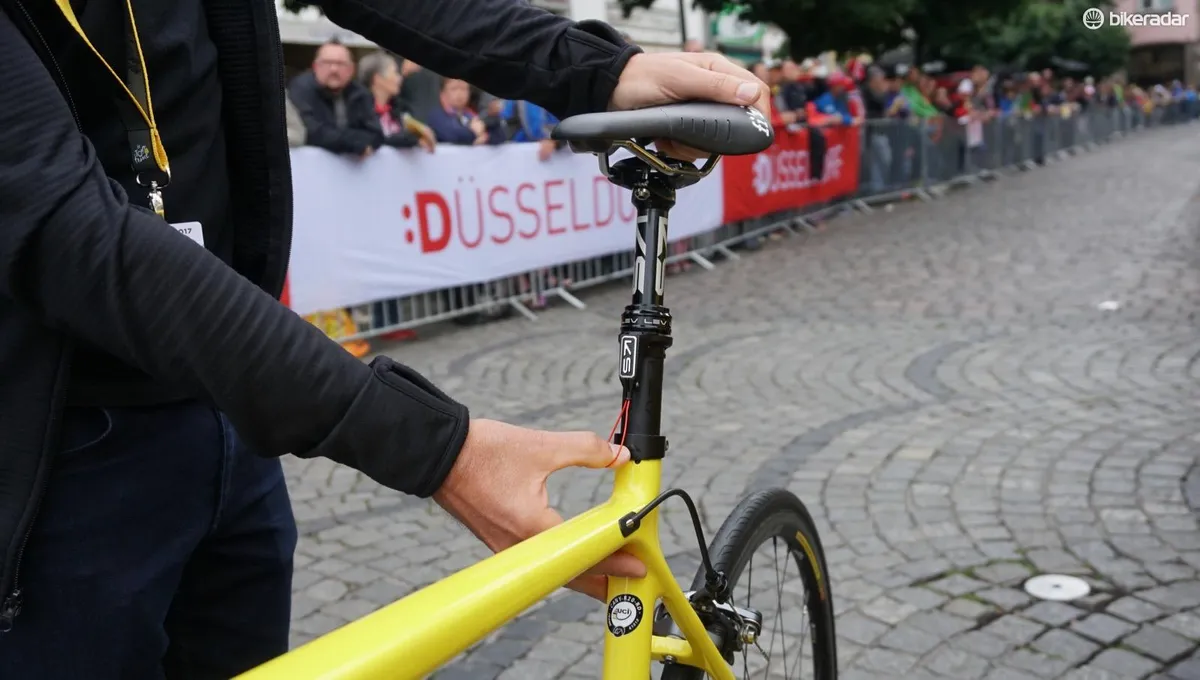
So, three of the six bikes on each of the Mavic cars have custom KS dropper posts that adjust vertically up to 65mm with a tug on a loop. To compress the posts, a rider pulls the loop and just sits on the saddle. Since the post is spring-loaded, pulling on the loop with the saddle unweighted causes it to snap back up.
"The idea is getting them moving as fast as possible, and then telling them from the car how to adjust it if necessary," Mavic brand manager Chad Moore said. "All the teams have been briefed on the system, so the riders should know how it works."
Further, each of those three bikes is set up with one of the major pedal systems: Shimano, Look and Speedplay.
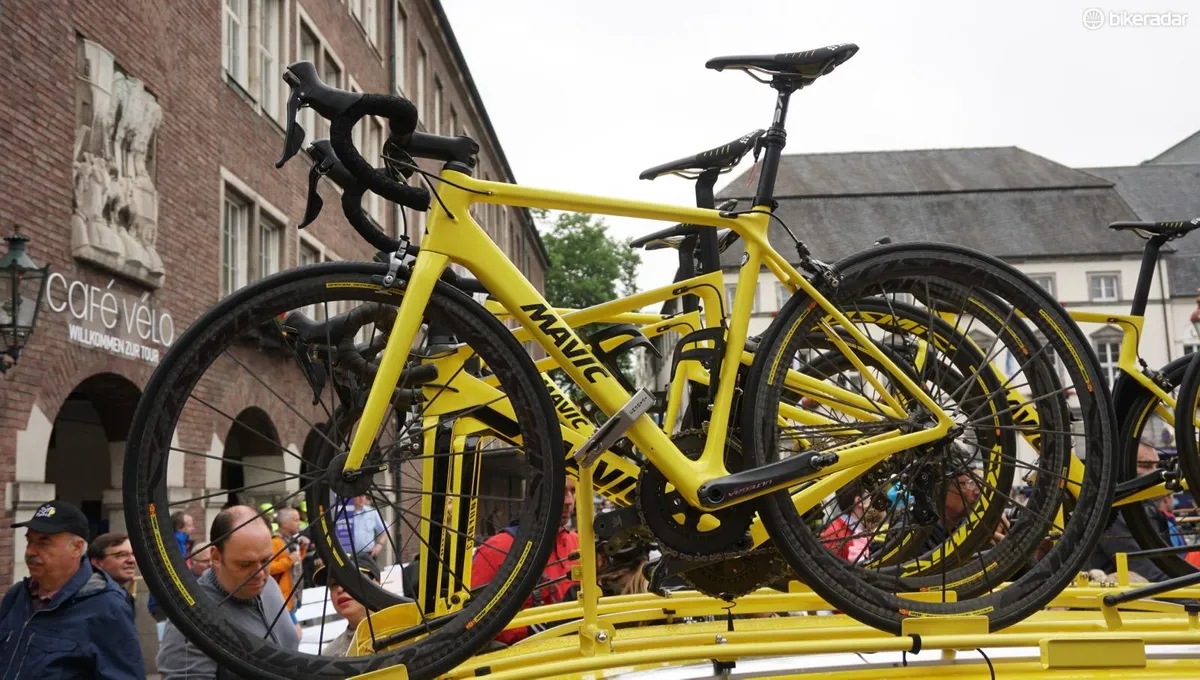
Finally, the remaining three bikes on the car are set up roughly for the top three riders on the Tour's general classification.
It isn't likely that riders will have to take a Mavic neutral bike as their teams cars are often close behind and riders would prefer their own back-up, but Mavic wants to be ready, just in case.
And about those pesky disc-brake wheels
The introduction of discs into the Tour peloton has complicated neutral service, and was another reason behind Mavic's move to prioritize complete bike changes with riders.
Front rim-brake wheels are easy enough to change. For rear rim-brake wheels, neutral mechanics need to know whether to grab a wheel with a Campagnolo or a Shimano/SRAM cassette.
But with disc wheels, you have two rotor sizes (140 and 160mm) and a variety of bike-specific thru-axle configurations. (Quick-release disc wheels seem to have been a flash in the pan for pro bikes.) Mavic deemed it easier to just hand a rider a complete bike. Mavic still has disc wheels, just in case.
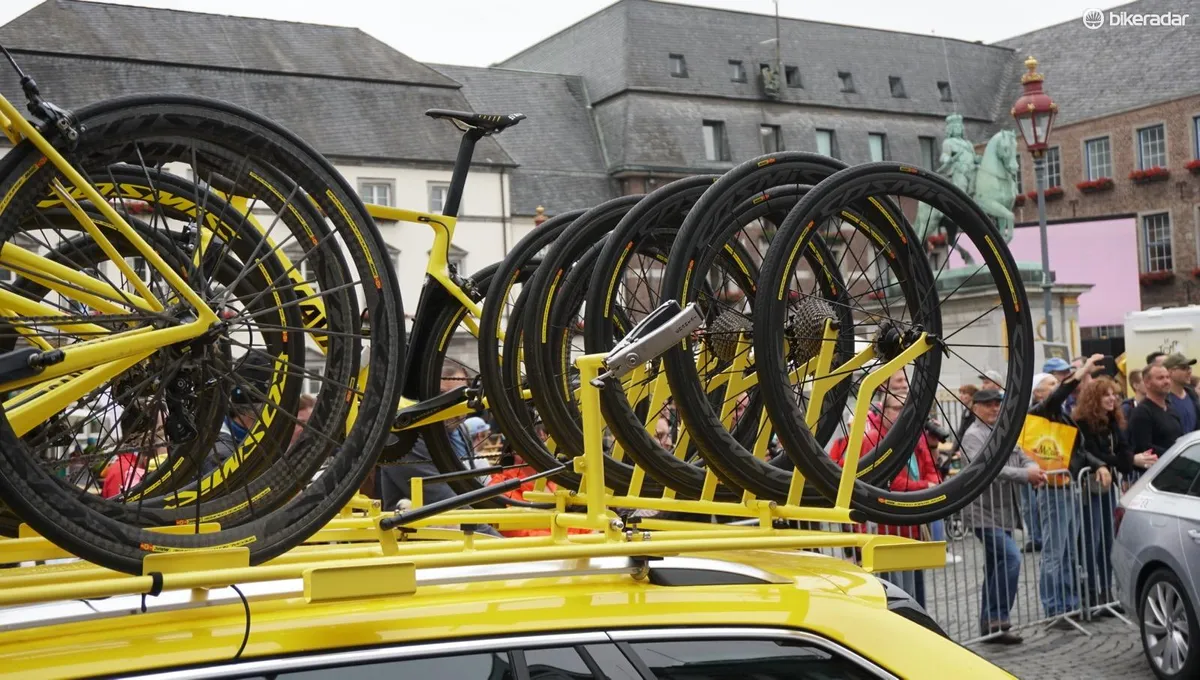
Confusingly, the UCI has mandated that 160mm is the official rotor size for pro racing — but some teams, such as stage 2 winner Marcel Kittel's Quick Step squad, are racing 140mm. So, Mavic has 160mm wheels on the car, but may bring 140mm wheels in the car.
"After what happened with Froome and the introduction of disc brakes, we needed to change," Moore said. "We are a neutral service, so we support all riders, but we absolutely want to be ready to support the GC guys."
